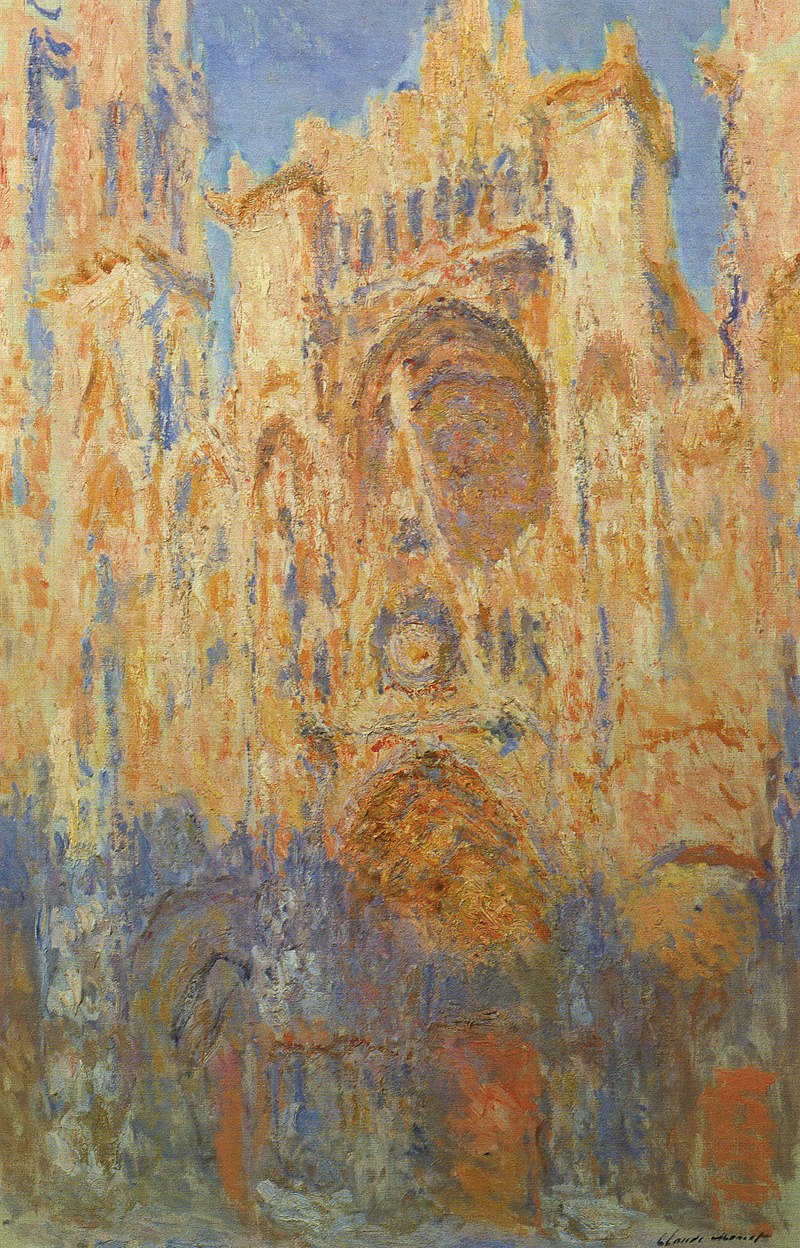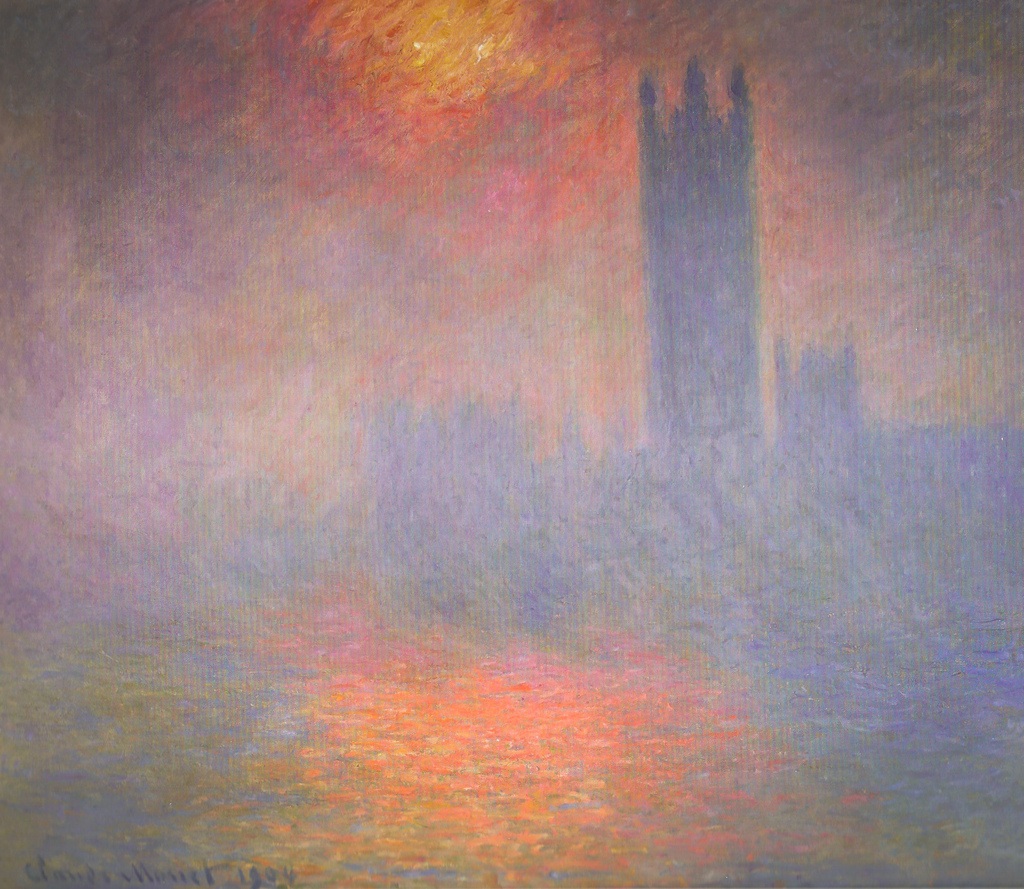Claude Monet (1840 - 1926)
55
Oscar-Claude Monet was a French painter and founder of impressionism painting who is seen as a key precursor to modernism.

Childhood
Born in Paris, Oscar Claude Monet moved at the age of five to Le Havre, a seaside town in northern France. His father was a successful grocer that later turned to shipping. His mother died when he was 15. The ocean and rugged coastline of Northern France had a profound effect on him at an early age, and he would often run away from school to go for walks along the cliffs and beaches. As a youth, he received instruction at the College du Havre from a former pupil of the famous Neo-Classical artist Jacques-Louis David. Creative and enterprising from an early age, he drew caricatures in his spare time and sold them for 20 francs apiece. Capitalizing on his early aptitude for art, he managed to save a good bit of money from his art sales.
Early Training
A pivotal experience occurred in 1856 when Monet became friends with Eugéne Boudin, a landscape painter famous for his scenes of northern French coastal towns. Boudin encouraged him to paint outdoors, and this en plein air technique changed Monet's concept of how art could be created: "It was as if a veil was torn from my eyes; I had understood. I grasped what painting could be."
Despite being rejected for a scholarship, in 1859 Monet moved to Paris to study with help from his family. However, instead of choosing the more customary career path of a Salon painter by enrolling at the École des Beaux-Arts, Monet attended the more avant-garde Académie Suisse, where he met fellow artist Camille Pissarro.
Mature Period
https://en.wikipedia.org/wiki/List_of_paintings_by_Claude_Monet

In 1865, the Paris Salon accepted two of Monet's seascapes for exhibition. However, the artist was feeling confined by working in a studio, preferring his earlier experience of painting in nature, so he moved just outside Paris to the edge of the Fontainebleau forest. Using his future wife, Camille Doncieux, as his sole model, his ambitiously large Women in the Garden (1866-67) was a culmination of the ideas and themes in his earlier work. Monet was hopeful that the work would be included in the Paris Salon, but his style kept him at odds with the jurors and the picture was refused, leaving the artist devastated. The official salon at this time still valued Romanticism. (In 1921, to assuage the 50-year-old insult, Monet made the French government purchase the painting for the enormous sum of 200,000 francs.)

To escape the Franco-Prussian War in 1870, Monet took refuge in London, producing many scenes such as Westminster Bridge (1871). His wife and their new baby boy Jean joined him. He visited London museums and saw the works of John Constable and J.M.W. Turner, whose romantic naturalism clearly influenced his use of light. Most importantly, he met Paul Durand-Ruel, who ran a new modern art gallery on Bond Street. Durand-Ruel became a major supporter of Monet and Pissarro, and later Renoir, Degas, and other French Impressionists.
Returning to France after the war, Monet settled his family in Argenteuil, a suburb of Paris along the Seine River. Over the next six years he developed his style and documented the changes in the growing town in over 150 canvases. His presence also attracted Parisian friends including Renoir and Manet. While Manet was 10 years older and became an established artist much earlier than Monet, by the 1870s each influenced the other in significant ways, and Monet had successfully won Manet over to plein air painting by 1874.
In a continued effort to protest the salon system, Monet and his friends organized their own exhibition in 1874, held in the vacated studio of photographer and caricaturist Nadar. This became known as the first Impressionist exhibition. These artists, including Renoir, Degas, and Pissarro, were the first artists to collectively respond to the changes in their city. The modernization of Paris was evident in the wider boulevards needed to accommodate the expanding fashions of public life and growing traffic of consumerism. Not only was their subject matter new, but the way they portrayed this reality was unique as well. Intuitive feeling and the essence of spontaneity, of the moment, were impressed upon the canvas. It was through the 1873 work Impression, Sunrise that Monet inadvertently gave the movement its name, although that name was actually initially used by writers to criticize these types of works.
While Monet's upbringing was rather middle class, his extravagant tastes led him to live much of his life in varying degrees of poverty and debt. His paintings were not a decent source of income and he often had to borrow money from his friends. After receiving several commissions throughout the 1870s, Monet enjoyed some financial success, but was in dire straits by the end of the decade.

Progression of Claude Monet Art
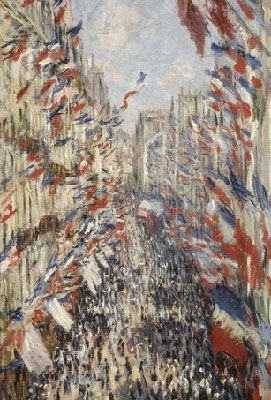 1878
1878
The Rue Montorgueil in Paris.
Celebration of June 30th, 1878
Historians and scientists believe that Monet happened upon discoveries in vision and optics. Professor Ian Aaronson believes that Monet was endowed with hyper-sensitive visual abilities where he could notice things that most people would miss. For example, in this work if one were to look at the way the flags themselves are painted, they look quite blurry and unclear.
But when the viewer looks down at the crowd, the flags seem to wave in peripheral vision (best to try this on the real painting, not a reproduction). As in this example, Monet seems to have come upon several particularities of vision, and painterly effects, that were not properly proved by science for many years after his death.
Oil on canvas - Musée d'Orsay, Paris
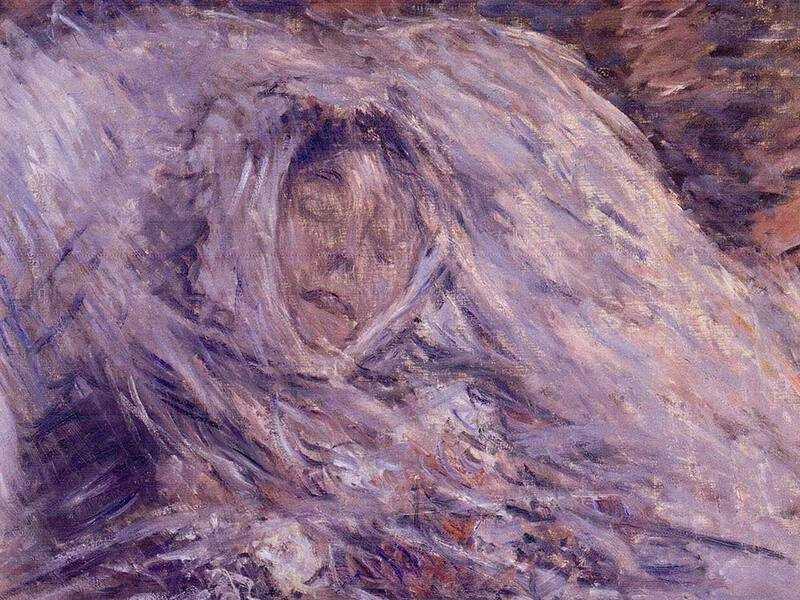 1879 Camille
1879 Camille

The Cliffs at Etretat, 1885, Clark Art Institute
 Sailboats behind the needle at Etretat, 1885
Sailboats behind the needle at Etretat, 1885





Two paintings from a series of grainstacks, 1890–91: Grainstacks in the Sunlight, Morning Effect


 Claude Monet (1840-1926)
Claude Monet (1840-1926)
Meule
signed and dated 'Claude Monet 91' (lower left)
oil on canvas
28 5/8 x 36 ¼ in. (72.7 x 92.1 cm.)
Painted in 1891
Price realisedUSD 81,447,500
1892 ROUEN



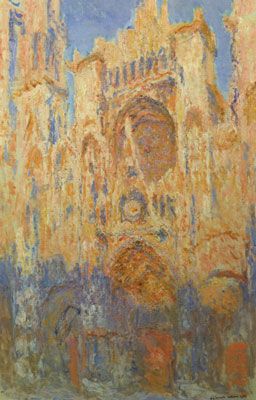

1893 - 1894
Rouen Cathedral: The Facade at Sunset
Monet produced 30 canvasses of Rouen Cathedral from spring 1892, renting a room overlooking the cathedral so that he could paint from exactly the same spot each day.
Monet's Rouen Cathedral: The Facade at Sunset series is one of his most renowned. He painted the cathedral at different times of day to explore the effects of different light during winter. The burnt orange and blue appearance of the cathedral dominates the canvas, with only scattered views of sky at the top. Layered over the top of the Gothic structure, the brushstrokes play with the light and atmosphere on the stones, and the details on their carved surfaces.
In 1895, he exhibited twenty Cathedrals at the Durand-Ruel Gallery that were both criticized and praised by viewers that either struggled with or championed his artistic, scientific, and poetic innovations. As art historian Madalena Dabrowski wrote: "the site is [only] a reference point, but is transformed and conditioned by light, color, and Monet's own vision."
Painting in a series, or making any kind of artwork with subtle changes from one piece to the next has been a staple of modern art for many artists, from Andy Warhol to the Minimalists, to Conceptual artists.
Not only has it been a way for artists to explore subtle difference between subjects, but some artists reference Monet directly in their series works.
Oil on canvas - Museums of Fine Arts, Boston
1893












1894









Monet painted in London in 1891 and returned there a number of times over the years to paint the Houses of Parliament and Waterloo Bridge.

1899 - 1904 LONDON
Charing Cross Bridge, 1899, Thyssen-Bornemisza Museum, Madrid


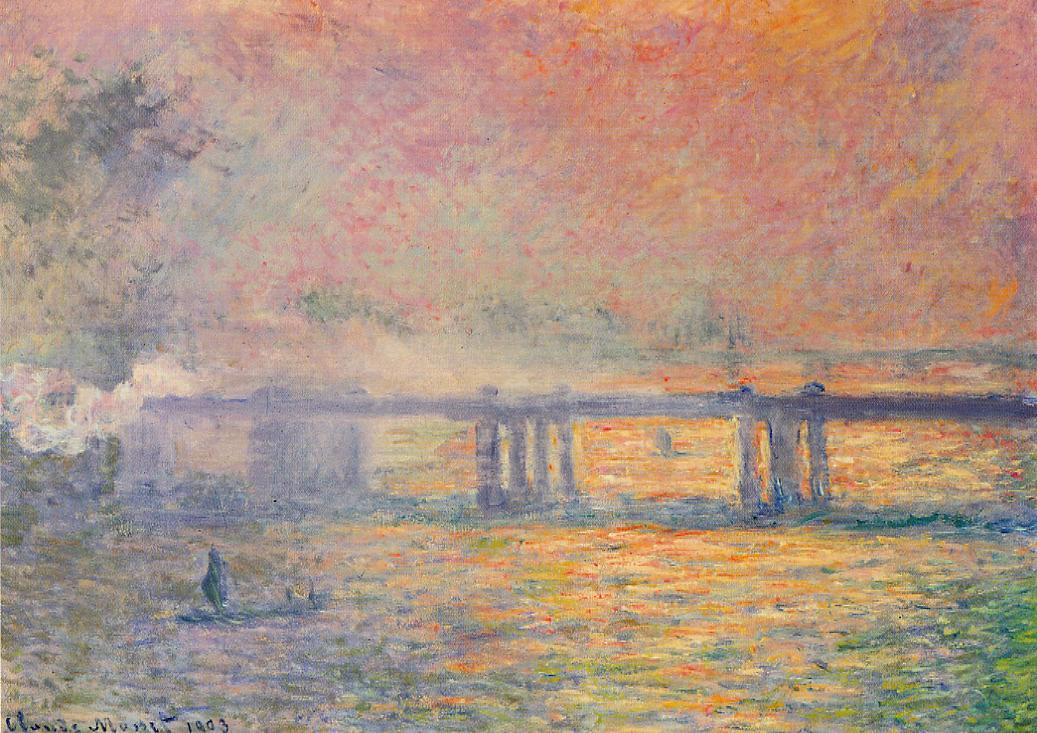
Charing Cross Bridge, London, 1899–1901, Saint Louis Art Museum
Two paintings from a series of The Houses of Parliament, London, 1900–01, Art Institute of Chicago
1908 Venice



Grand Canal, Venice, 1908, Museum of Fine Arts, Boston
Grand Canal, Venice, 1908, Fine Arts Museums of San Francisco

San Giorgio Maggiore, 1908, Indianapolis Museum of Art




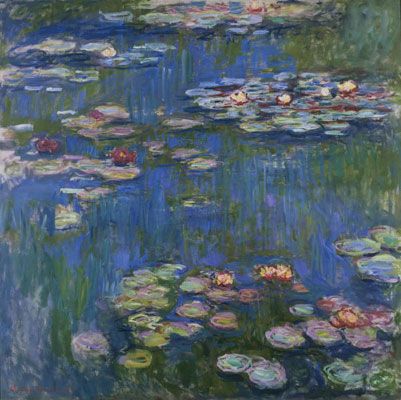
Water Lilies
The Nymphéas cycle is a part of Monet's water landscape group that he started working on in the late 1890s. As explained on the Musée de l'Orangerie website: the word nymphéa comes from the Greek word numphé, meaning nymph, which takes its name from the Classical myth that attributes the birth of the flower to a nymph who was dying of love for Hercules. In fact, it is also a scientific term for a water lily.
This series occupied Monet until his death 30 years later and includes dozens of canvases creating a panorama of water, lilies, and sky in his studio inspired by his Giverny garden. The most famous of this series are the eight large panels of Water Lillies that are installed in two eliptical rooms of the L'Orangerie museum in Paris.
Monet describes his goals for the project: "Imagine a circular room, whose walls are entirely filled by a horizon of water spotted with these plants. Walls of transparency - sometimes green, sometimes verging on mauve. The silence and calm of the water reflecting the flowering display; the tones are vague, deliciously nuanced, as delicate as a dream."
The ultimate installation is considered to be one of the greatest achievement of Monet, Impressionism, and even 20th-century art. The lighting and setup in the museum maximizes the viewers' experience next to these works, providing, as Monet said, an "illusion of an endless whole, of a wave with no horizon and no shore". These works would be enormously influential for many artists, but the all over composition would particularly inspire the Abstract Expressionist large-scale canvases of The New York School.
Oil on canvas - Musée de l'Orangerie, Paris
 Le bassin aux nymphéas - Claude Monet
Le bassin aux nymphéas - Claude Monet
Le Bassin Aux Nymphéas, 1919. Monet's late series of water lily paintings are among his best-known works.
 Water Lilies, 1919, Metropolitan Museum of Art, New York
Water Lilies, 1919, Metropolitan Museum of Art, New York

 Water Lilies, 1920, National Gallery, London
Water Lilies, 1920, National Gallery, London
 Water Lilies, c. 1915–1926, Nelson-Atkins Museum of Art, Kansas City, Missouri
Water Lilies, c. 1915–1926, Nelson-Atkins Museum of Art, Kansas City, Missouri
 Reflections of Clouds on the Water-Lily Pond, c. 1920, Museum of Modern Art, New York
Reflections of Clouds on the Water-Lily Pond, c. 1920, Museum of Modern Art, New York
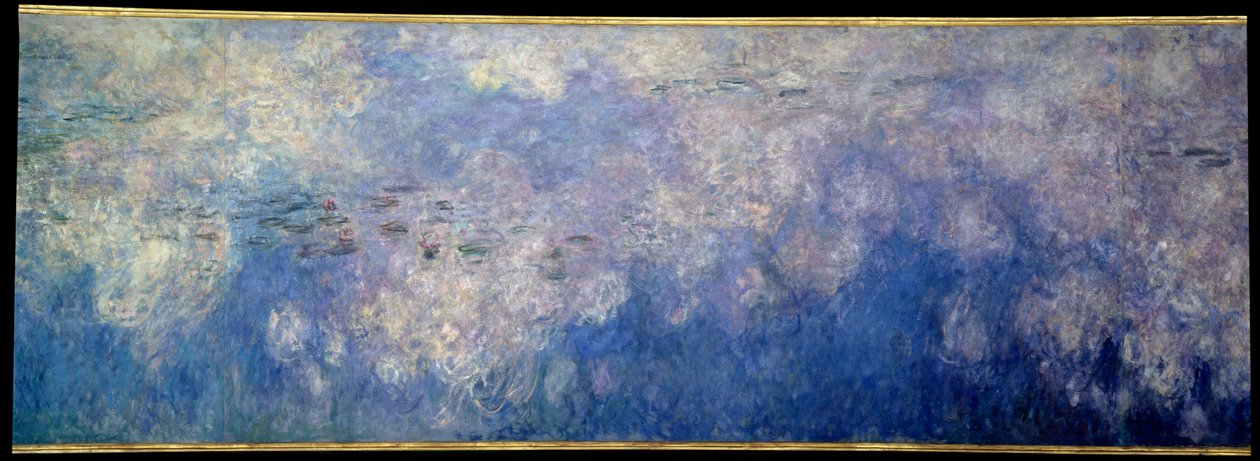
The Nympheas; The Clouds
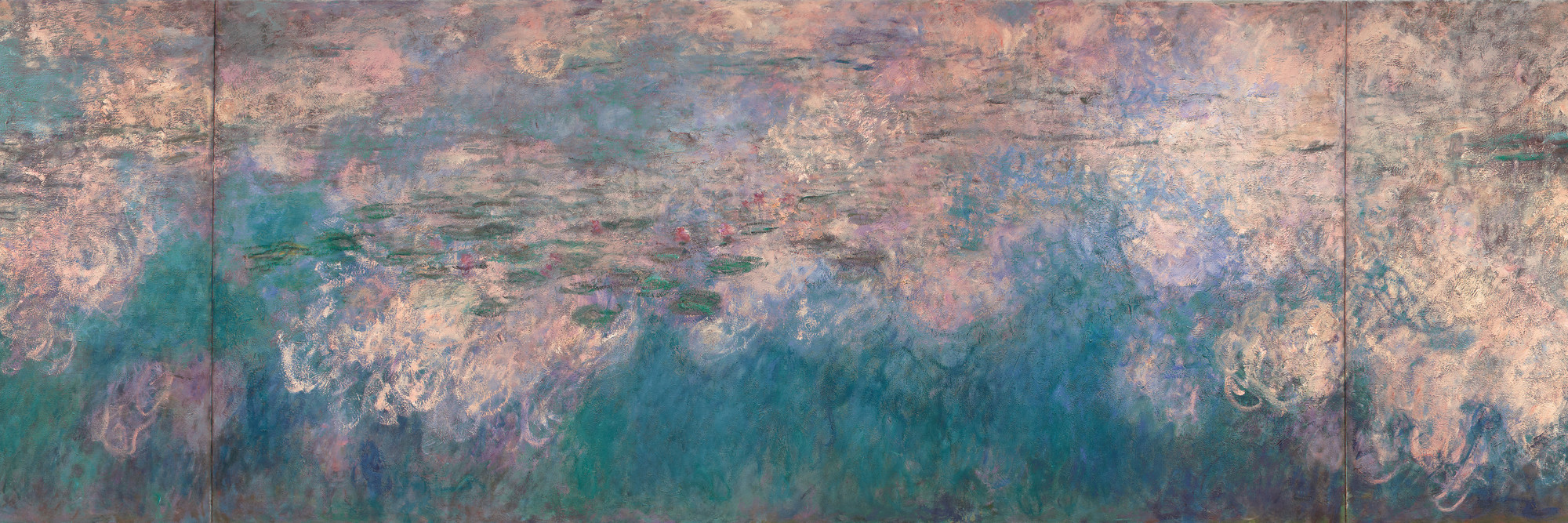
Claude Monet Water Lilies MOMA
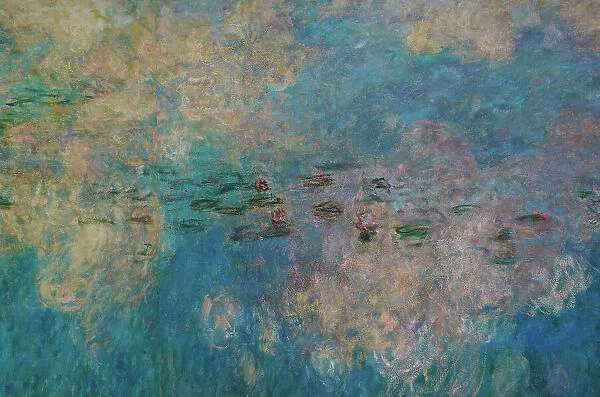

The Grand Decorations
Claude Monet slaved over the eight water lilies displayed by the Musee de l'Orangerie between 1914 and his death in December 1926.
They are each 2 metres tall, and measure between 6 and 17 metres in length - making a total length of about 100 metres. Known as the "Grand Decorations", the paintings are affixed to the walls of two purpose-built oval shaped rooms, which are bathed in natural light on a sunny day.
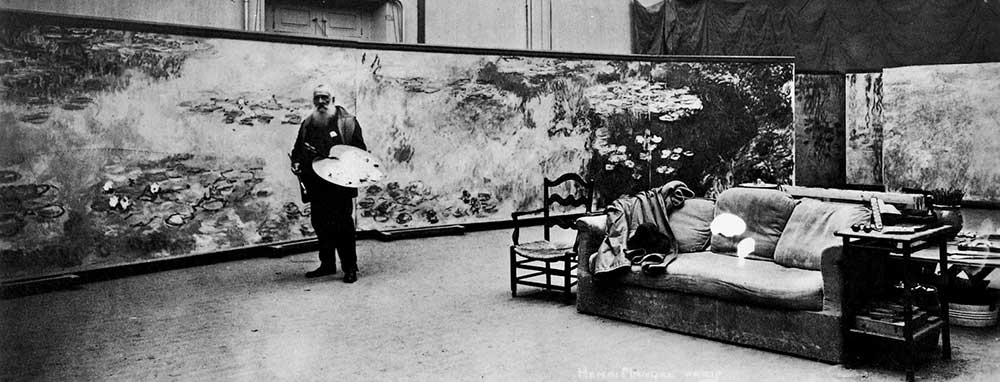
Monet in his newly constructed Water Lily studio
The eight paintings, and their sizes, are described in turn below. Paintings 1-4 are displayed in the first oval room; paintings 5-8 in the second.
(1) Waterlilies: Morning (2 x 12.75 metres, made up of four panels).

(2) Waterlilies: Clouds (2 x 12.75 metres, made up of three panels).


(3) Waterlilies: Setting Sun (2 x 6 metres).
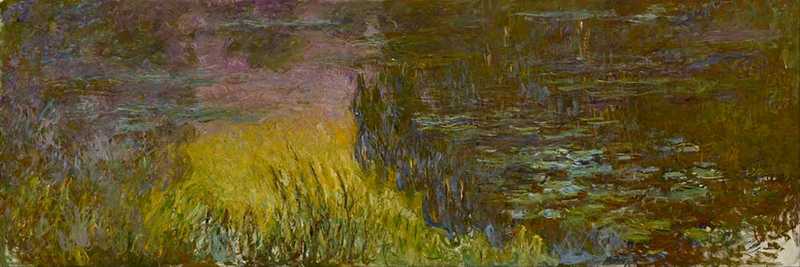
(4) Waterlilies: Green Reflections (2 x 8 metres).

(5) Waterlilies: Clear Morning with Weeping Willows (2 x 12.75 metres, made up of three panels).

(6) Waterlilies: Morning with Weeping Willows (2 x 12.75 metres, made up of three panels).
(7) Waterlilies: Reflections of Trees (2 x 8.5 metres, made up of two panels).

(8) Waterlilies: The Two Willow Trees (2 x 17 metres, made up of four panels).



 In 1877 Monet decided to paint fog and tricked the director of the Gare Saint Lazare into thinking he was an important artist (which in those days he wasn't!)
In 1877 Monet decided to paint fog and tricked the director of the Gare Saint Lazare into thinking he was an important artist (which in those days he wasn't!)





